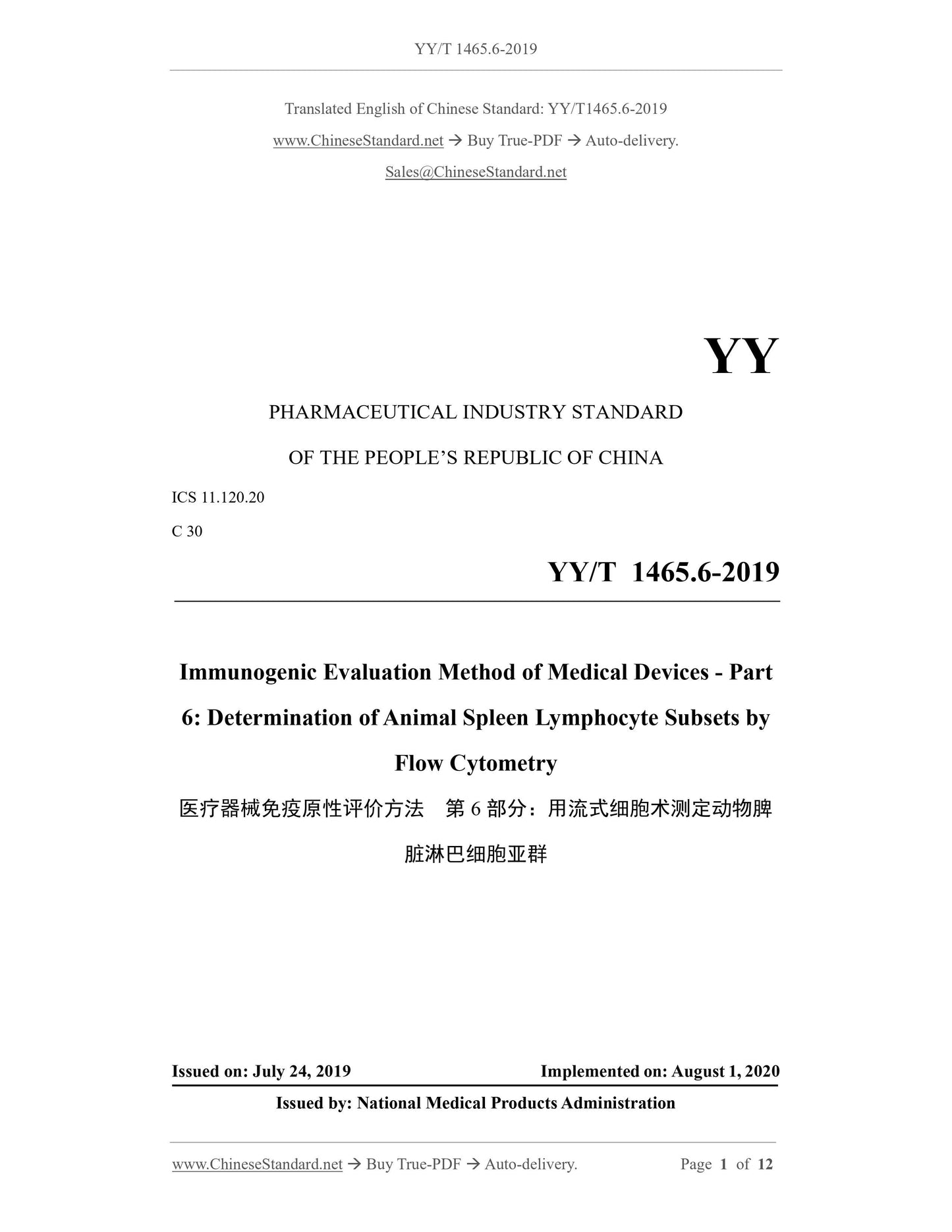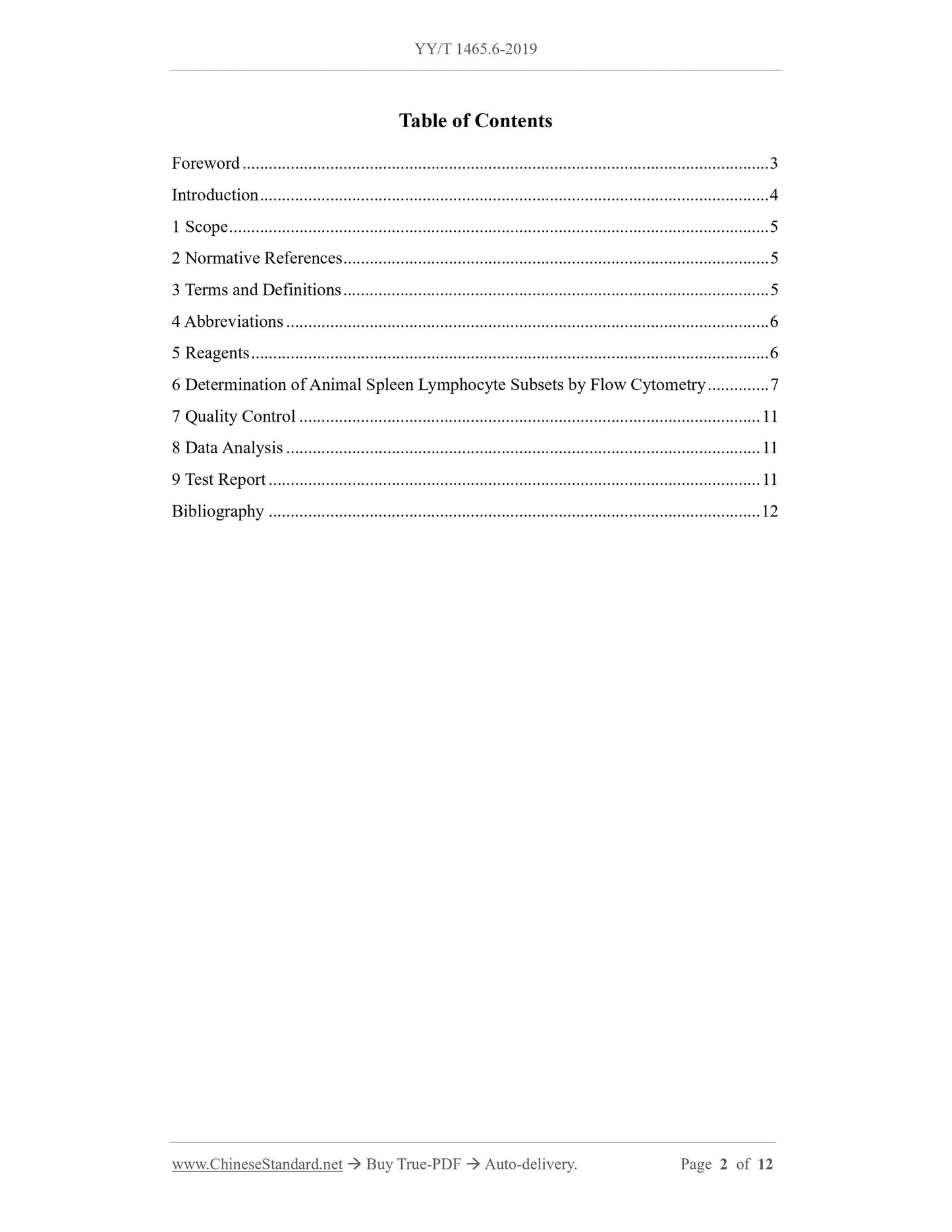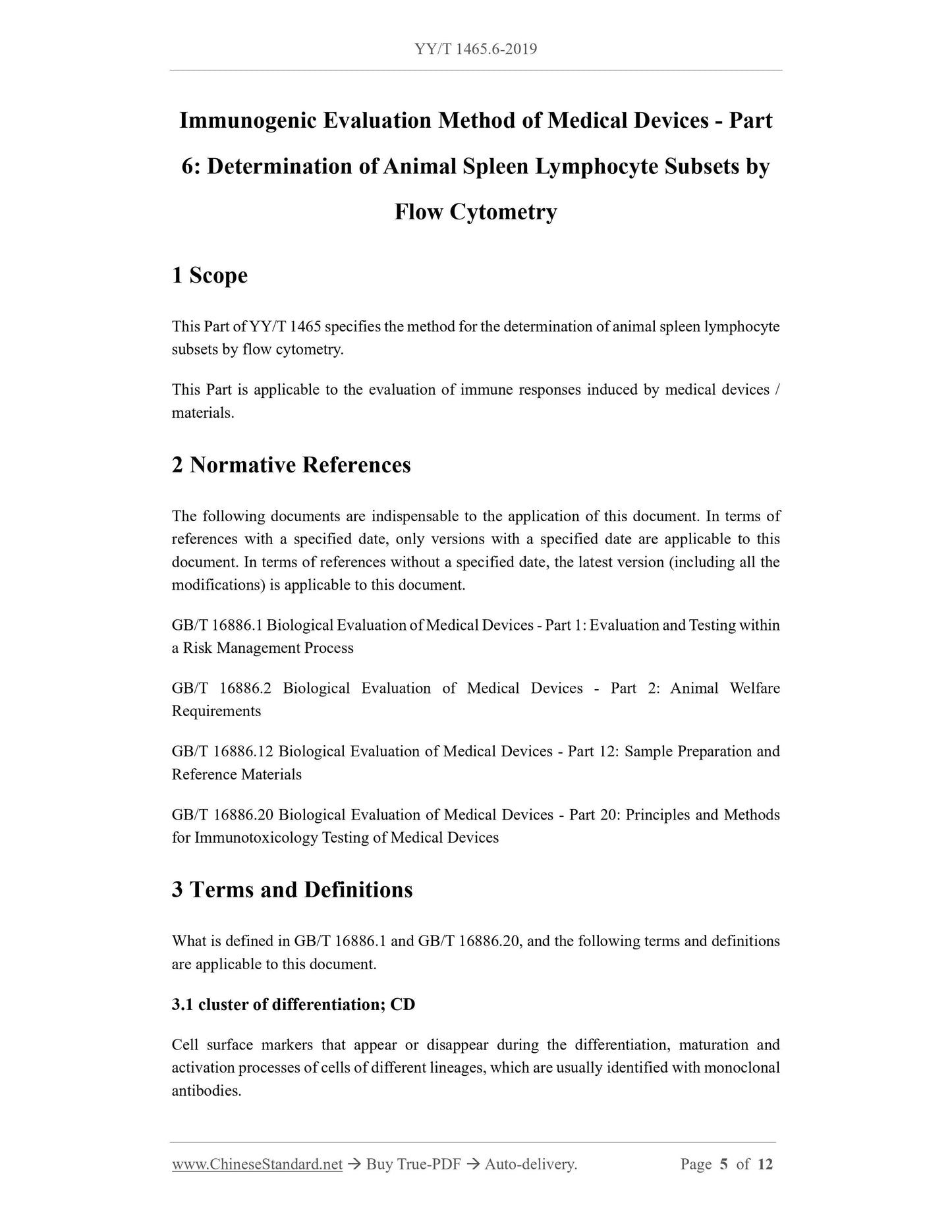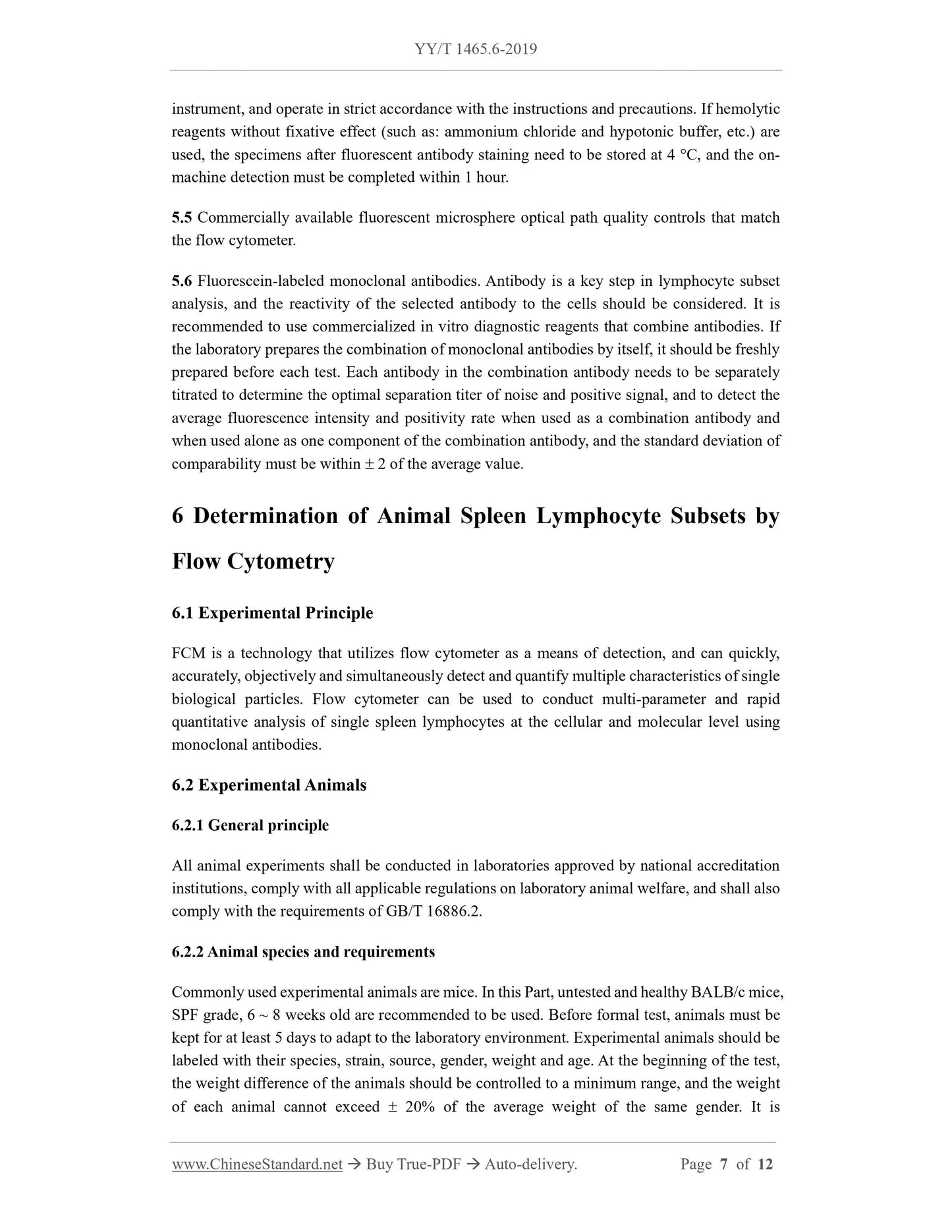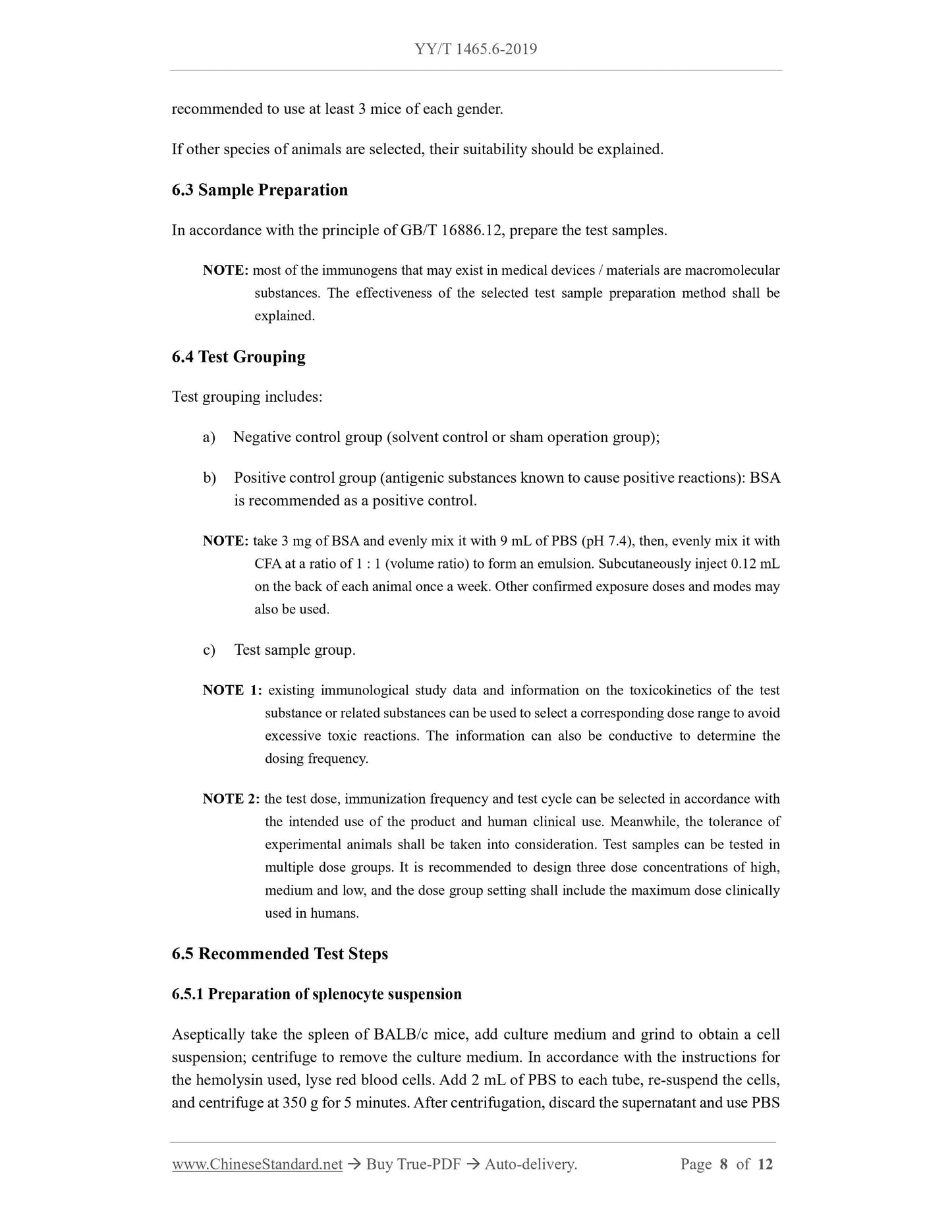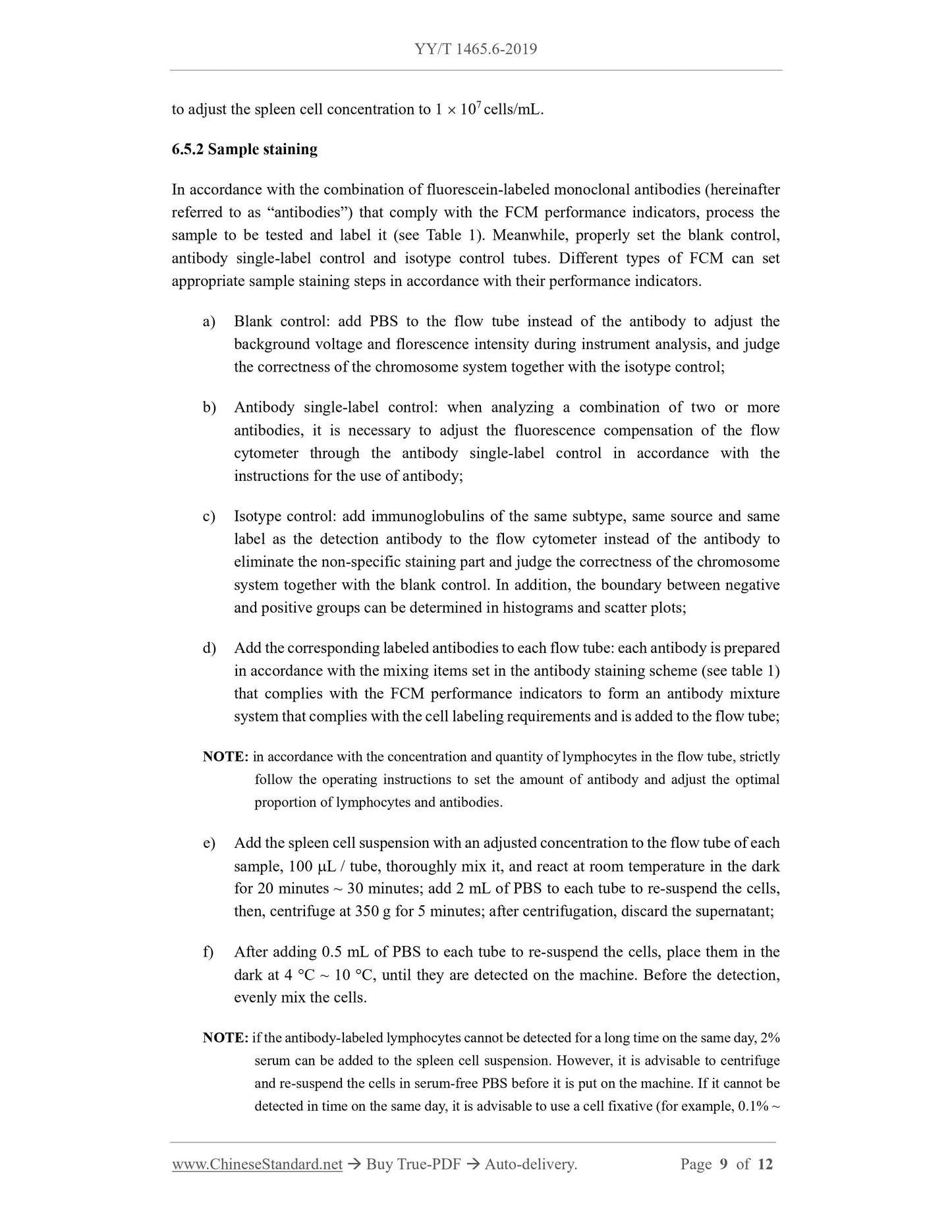1
/
of
6
www.ChineseStandard.us -- Field Test Asia Pte. Ltd.
YY/T 1465.6-2019 English PDF (YY/T1465.6-2019)
YY/T 1465.6-2019 English PDF (YY/T1465.6-2019)
Regular price
$185.00
Regular price
Sale price
$185.00
Unit price
/
per
Shipping calculated at checkout.
Couldn't load pickup availability
YY/T 1465.6-2019: Immunogenic evaluation method of medical devices - Part 6: Determination of animal spleen lymphocyte subsets by flow cytometry
Delivery: 9 seconds. Download (and Email) true-PDF + Invoice.Get Quotation: Click YY/T 1465.6-2019 (Self-service in 1-minute)
Newer / historical versions: YY/T 1465.6-2019
Preview True-PDF
Scope
This Part of YY/T 1465 specifies the method for the determination of animal spleen lymphocytesubsets by flow cytometry.
This Part is applicable to the evaluation of immune responses induced by medical devices /
materials.
Basic Data
| Standard ID | YY/T 1465.6-2019 (YY/T1465.6-2019) |
| Description (Translated English) | Immunogenic evaluation method of medical devices - Part 6: Determination of animal spleen lymphocyte subsets by flow cytometry |
| Sector / Industry | Medical Device and Pharmaceutical Industry Standard (Recommended) |
| Classification of Chinese Standard | C30 |
| Classification of International Standard | 11.120.20 |
| Word Count Estimation | 10,182 |
| Date of Issue | 2019 |
| Date of Implementation | 2020-08-01 |
| Issuing agency(ies) | State Drug Administration |
| Summary | This standard specifies a method for the determination of animal spleen lymphocyte subsets by flow cytometry. This standard applies to the evaluation of immune responses induced by medical devices/materials. |
Share
